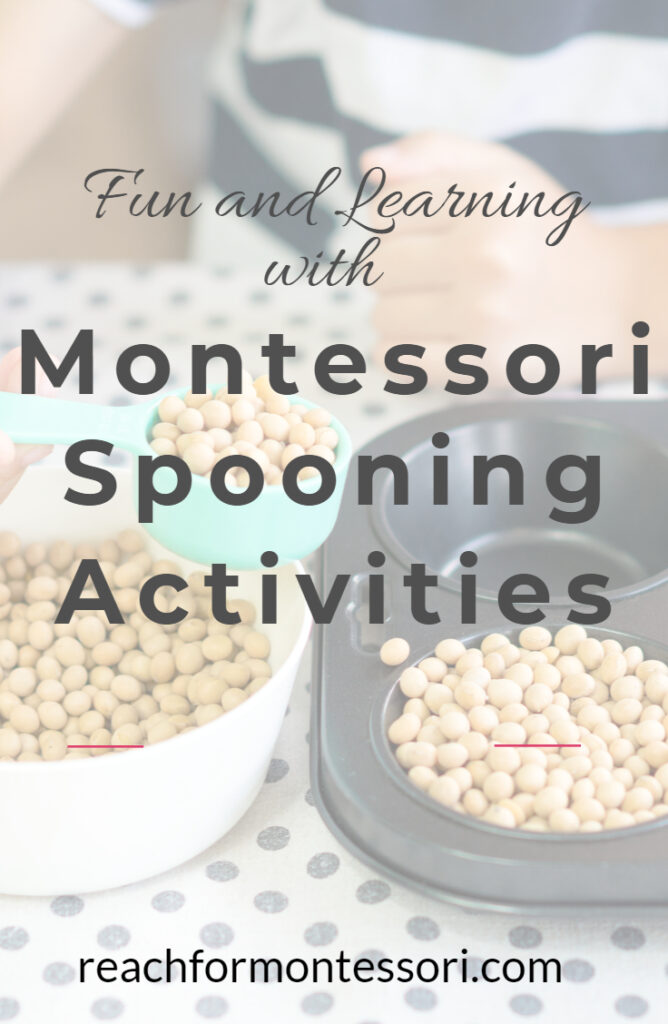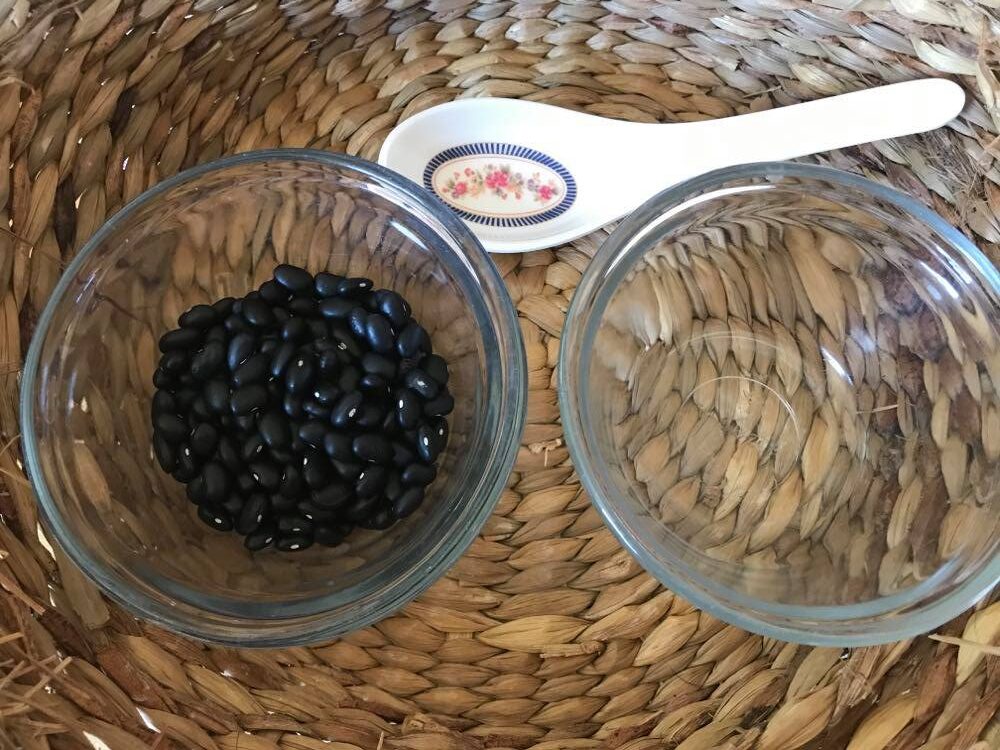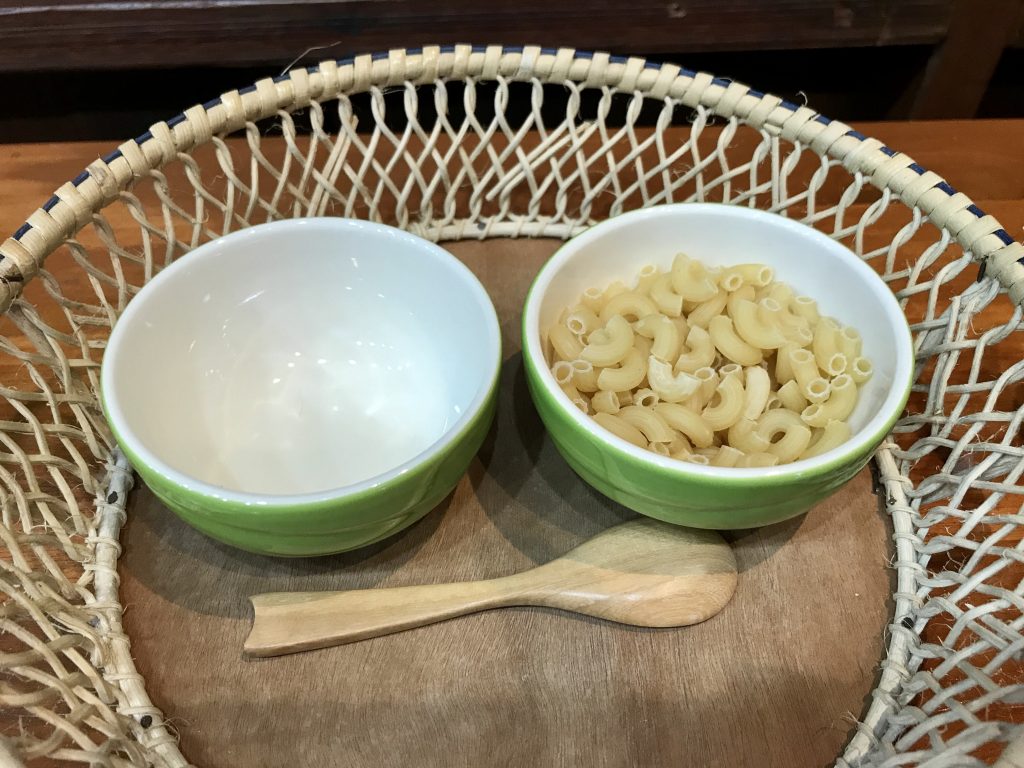In this article, you will learn what Montessori spooning activities are, how to introduce them to your child, and get some spooning activity ideas.
What are Montessori spooning activities?
Montessori spooning work is a Practical Life work that is typically introduced in a Montessori classroom in the primary years.
This activity belongs to a special category of Practical Life activities that is introduced early on; Preliminary Practical Life or Preliminary Movement activities.

This preliminary Practical Life work is aimed at helping a child master the coordination and concentration needed to interact with the Montessori materials and navigate the Montessori environment.
Some other Preliminary Practical Life activities:
- opening/closing doors quietly
- gently turning pages of a book
- walking a line of painters tape
- moving chair quietly away from a table
- walking around/between work mats
These activities might seem trivial to those unfamiliar with Montessori, but the importance of these preliminary activities cannot be overstated. They are vital to the success of any Montessori learning environment.
Through activities like this spooning exercise, children learn to be precise in their movements and to take care of the materials.
Taking care of their movements will carry into cosmic lessons throughout a child's Montessori learning career.

How to introduce spooning activities
Direct and indirect aims of transferring with a spoon
- learning how to spoon items from one container to another
- measurement and estimation skills
- hand-eye coordination
- visual discrimination
- practice making precise movements
- refinement of fine motor skills
Points of interest for the Montessori spooning activities
- difference between weight of empty spoon and filled spoon
- visual difference of empty full bowls
- sound of dry beans/rice, ect as they fall into bowl (auditory feedback)
Items you need for activity
- dry beans (or chosen item) in a glass bowl
- empty glass bowl (make sure to present with identical bowls)
- large spoon
- tray
- work mat

Presenting the Montessori spooning activity
Before, during, and after this presentation, it is important to carefully monitor the dry material chosen for this transferring activity, as they may pose a choking hazard for the child, a sibling, or a pet.
- Invite your child to carry the work mat to the table while you carry the activity tray
- Place the bowls on the mat, full bowl on the left and empty bowl on the right
- Tell your child you are going to transfer the beans from bowl to bowl using a spoon
- Grasp the spoon between the thumb and fingers of your dominant hand
- Scoop the beans slowly from one bowl to the other until the bowl on the left is empty
- If needed, steady the bowl on the left side with your non-dominant hand and tilt it slightly toward you if needed
- Now, scoop the beans back to their original bowl, using the same slow and steady motion
- Pick up any spilled beans using a pincer grasp and place them into the bowl on the left
- Invite your child to try
Spooning activity variations
For a new activity with a new degree of difficulty, you can set your Montessori spooning activity up using different items.
Doing this also helps children maintain interest in an activity. (Food items are uncooked)
The limit is your imagination, but here are some items for you to consider:
Items to spoon:
- large piece spices (cloves, ect)
- salt
- sugar
- rice
- lentils
- paper punch dots
- pom poms
- seeds
- cotton balls
- oats
- cereal
- small variety pasta
- barely
Many of these items can be dyed for holiday-themed activities, learning units, or for a color sorting activity.

Spoon variations:
- jelly spoon
- wooden spoon
- coffee scoop
- ladle
- serving spoon
- measuring scoop
Bowl variations:
- muffin tin
- egg carton
- wood bowls
- metal bowls
- ice cube tray
- cups
- baskets
I hope you enjoy watching your child concentrate on this fun activity!
What spooning activities does your child enjoy?
Cheers and don't forget to subscribe!
